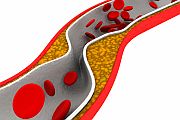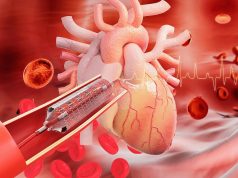Stroke/death rates similar with use of P-EPD and F-EPD in elective coronary artery stenting
MONDAY, April 27, 2015 (HealthDay News) — For patients undergoing elective carotid artery stenting (CAS), stroke/death rates are similar with use of proximal embolic protection devices (P-EPDs) and distal filter embolic protection devices (F-EPDs), according to a study published in the April 20 issue of JACC: Cardiovascular Interventions.
Jay Giri, M.D., M.P.H., from the University of Pennsylvania Perelman School of Medicine in Philadelphia, and colleagues compared stroke/death rates between P-EPDs and F-EPDs in elective CAS. Data were included for 10,246 consecutive elective CAS procedures; P-EPDs were used in 5.8 percent of cases.
The researchers observed higher rates of symptomatic lesion status (P < 0.001), atrial fibrillation/flutter (P = 0.03), and history of a neurological event (P = 0.03) among patients treated with P-EPDs. There were no significant between-group differences in in-hospital stroke/death in unadjusted and propensity-matched analyses (1.5 versus 2.4 percent [P = 0.16] and 1.6 versus 2.0 percent [P = 0.56], respectively). Thirty-day adverse event rates were similar for P-EPDs and F-EPDs before and after propensity matching (P = 0.07 and 0.22, respectively) for the 75.1 percent of patients with available data.
“Use of a P-EPD during CAS was associated with low rates of in-hospital stroke/death similar to those with an F-EPD in the first comparative effectiveness study of the devices,” the authors write. “An adequately powered randomized trial comparing clinical outcomes between these devices is unlikely to be feasible.”
Several authors disclosed financial ties to the pharmaceutical and medical device industries.
Full Text (subscription or payment may be required)
Copyright © 2015 HealthDay. All rights reserved.








